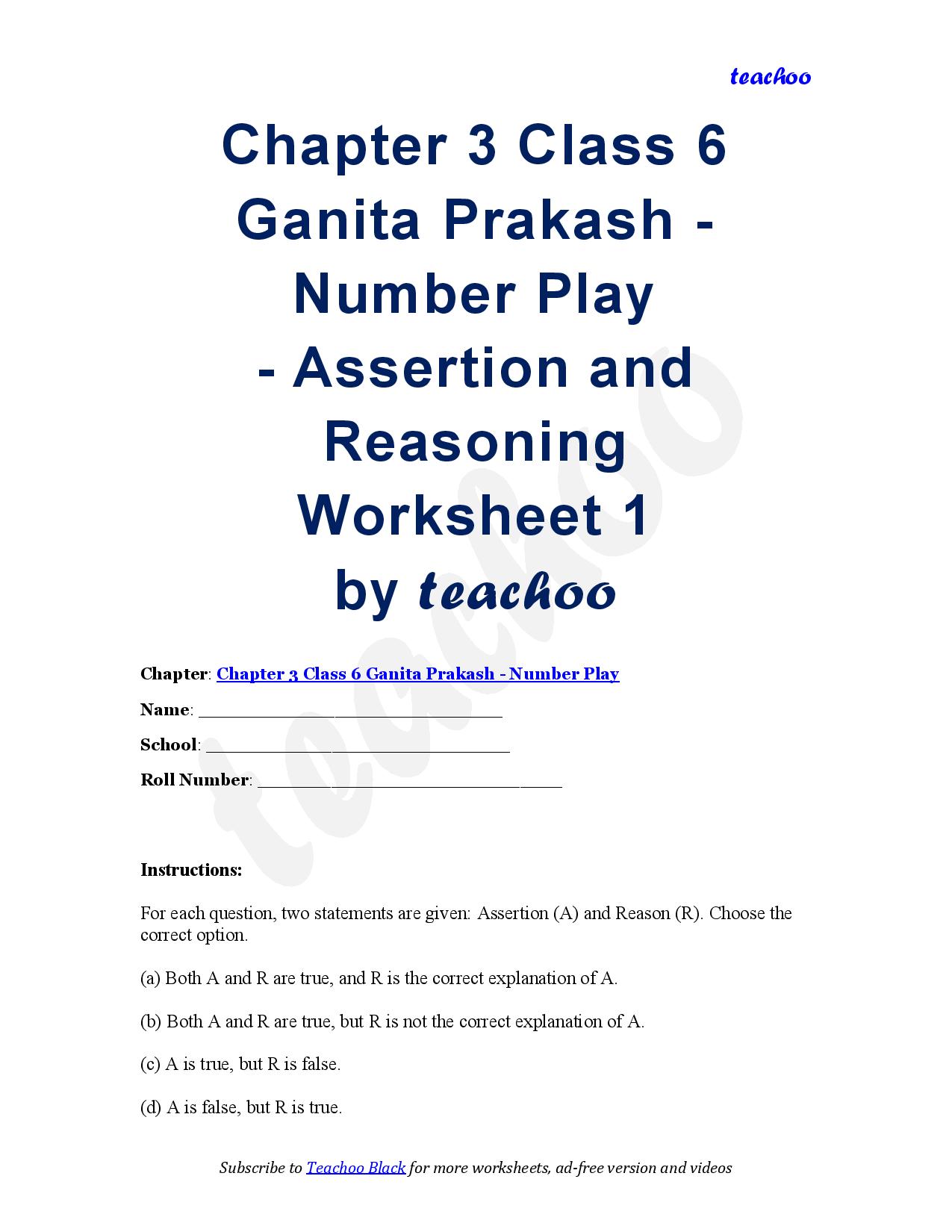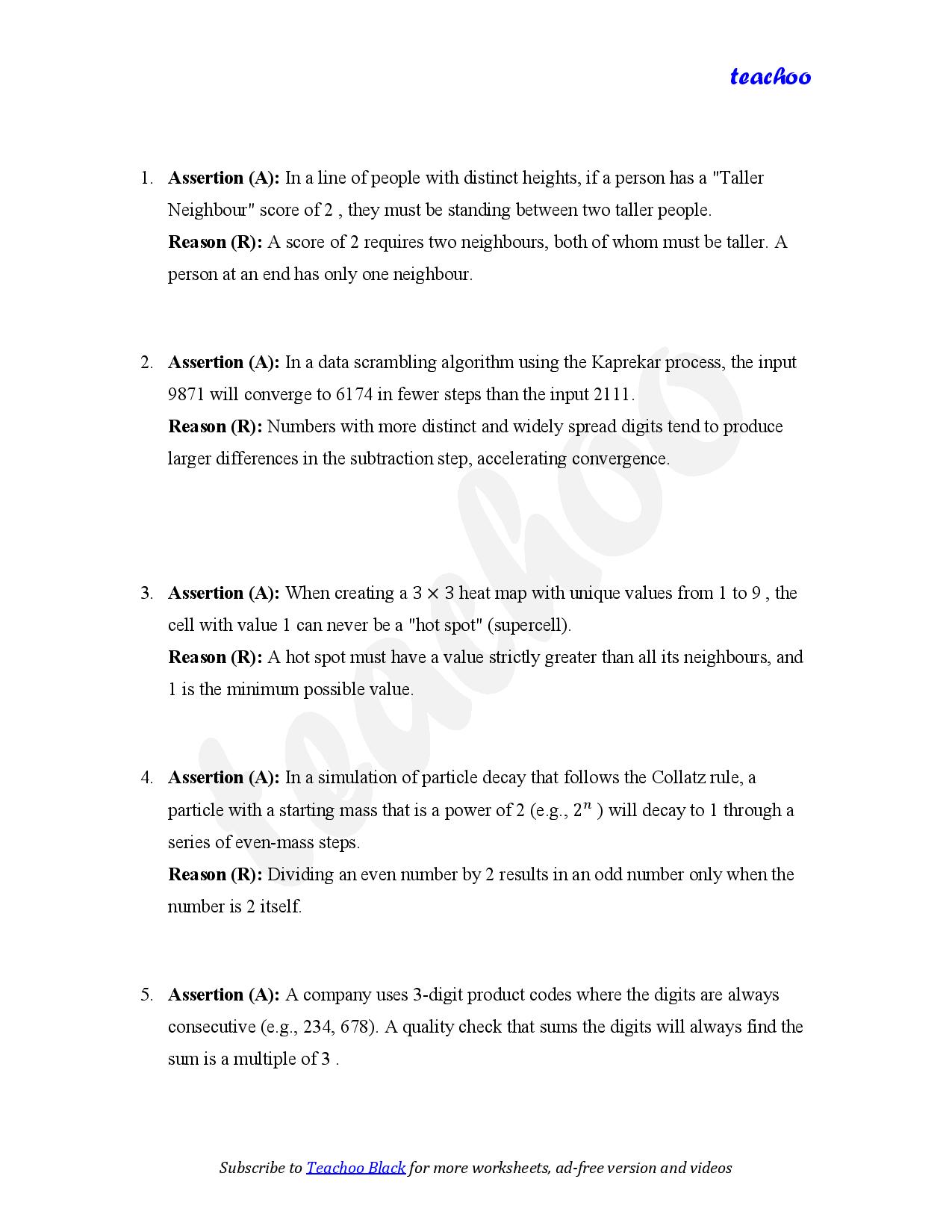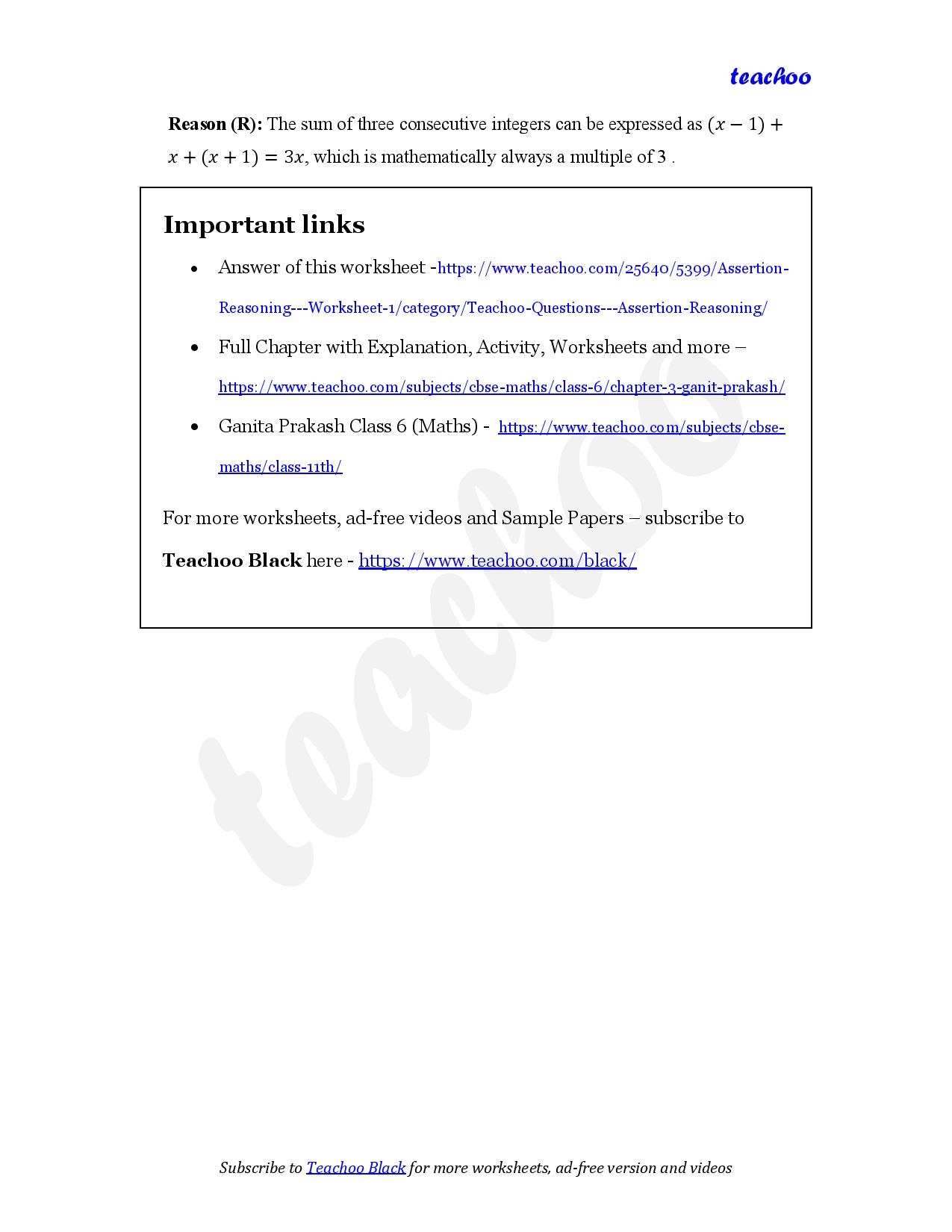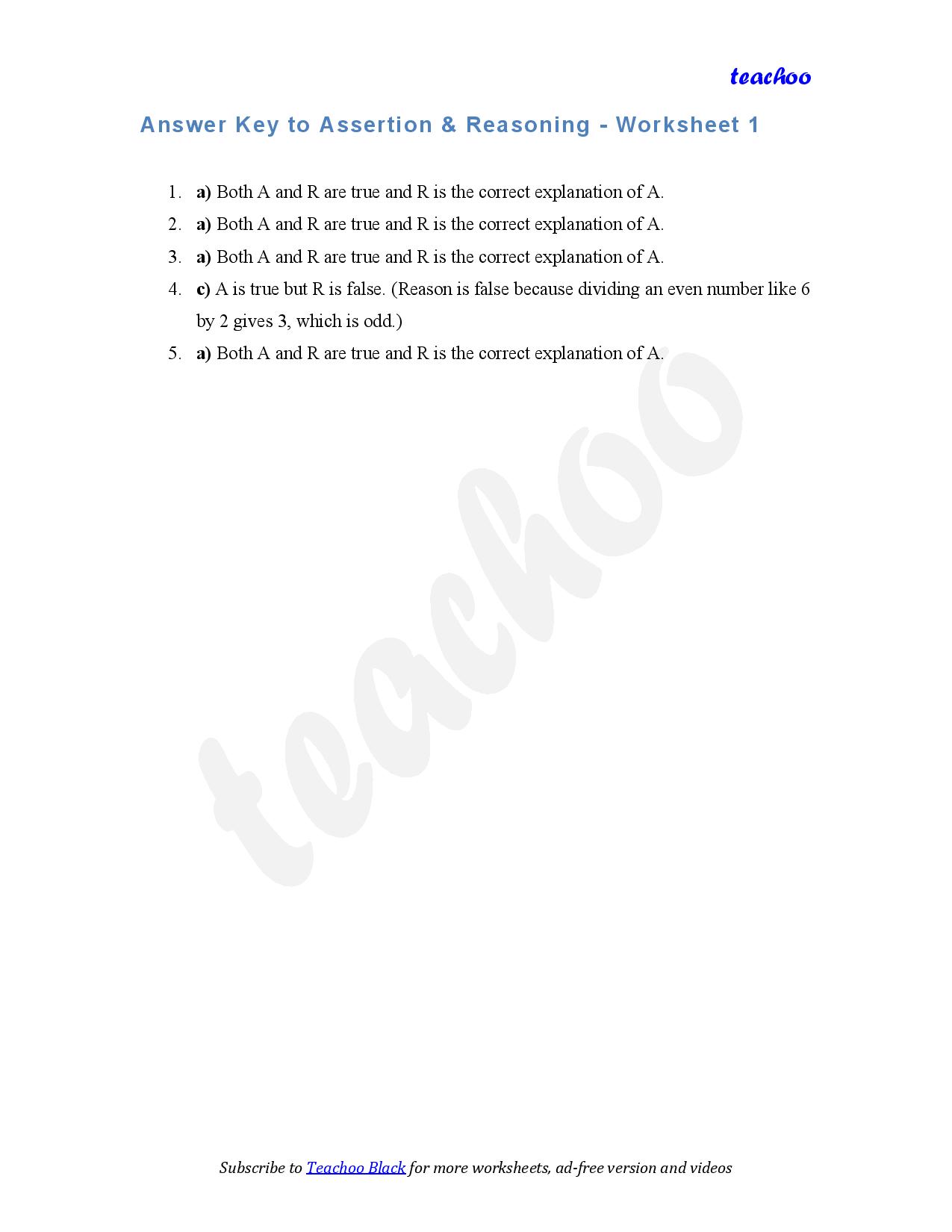



Teachoo Questions - Assertion Reasoning
Teachoo Questions - Assertion Reasoning
Last updated at July 23, 2025 by Teachoo




Transcript
Chapter 3 Class 6 Ganita Prakash - Number Play - Assertion and Reasoning Worksheet 1 by teachoo Chapter: Chapter 3 Class 6 Ganita Prakash - Number Play Name: _____________________________ School: _____________________________ Roll Number: _____________________________ Instructions: For each question, two statements are given: Assertion (A) and Reason (R). Choose the correct option. (a) Both A and R are true, and R is the correct explanation of A. (b) Both A and R are true, but R is not the correct explanation of A. (c) A is true, but R is false. (d) A is false, but R is true. Assertion (A): In a line of people with distinct heights, if a person has a "Taller Neighbour" score of 2 , they must be standing between two taller people. Reason (R): A score of 2 requires two neighbours, both of whom must be taller. A person at an end has only one neighbour. Assertion (A): In a data scrambling algorithm using the Kaprekar process, the input 9871 will converge to 6174 in fewer steps than the input 2111. Reason (R): Numbers with more distinct and widely spread digits tend to produce larger differences in the subtraction step, accelerating convergence. Assertion (A): When creating a 3×3 heat map with unique values from 1 to 9 , the cell with value 1 can never be a "hot spot" (supercell). Reason (R): A hot spot must have a value strictly greater than all its neighbours, and 1 is the minimum possible value. Assertion (A): In a simulation of particle decay that follows the Collatz rule, a particle with a starting mass that is a power of 2 (e.g., 2^n ) will decay to 1 through a series of even-mass steps. Reason (R): Dividing an even number by 2 results in an odd number only when the number is 2 itself. Assertion (A): A company uses 3-digit product codes where the digits are always consecutive (e.g., 234, 678). A quality check that sums the digits will always find the sum is a multiple of 3 . Reason (R): The sum of three consecutive integers can be expressed as (x-1)+x+(x+1)=3x, which is mathematically always a multiple of 3 . Important links Answer of this worksheet -https://www.teachoo.com/25640/5399/Assertion-Reasoning---Worksheet-1/category/Teachoo-Questions---Assertion-Reasoning/ Full Chapter with Explanation, Activity, Worksheets and more – https://www.teachoo.com/subjects/cbse-maths/class-6/chapter-3-ganit-prakash/ Ganita Prakash Class 6 (Maths) - https://www.teachoo.com/subjects/cbse-maths/class-11th/ For more worksheets, ad-free videos and Sample Papers – subscribe to Teachoo Black here - https://www.teachoo.com/black/ Answer Key to Assertion & Reasoning - Worksheet 1 a) Both A and R are true and R is the correct explanation of A. a) Both A and R are true and R is the correct explanation of A. a) Both A and R are true and R is the correct explanation of A. c) A is true but R is false. (Reason is false because dividing an even number like 6 by 2 gives 3, which is odd.) a) Both A and R are true and R is the correct explanation of A.